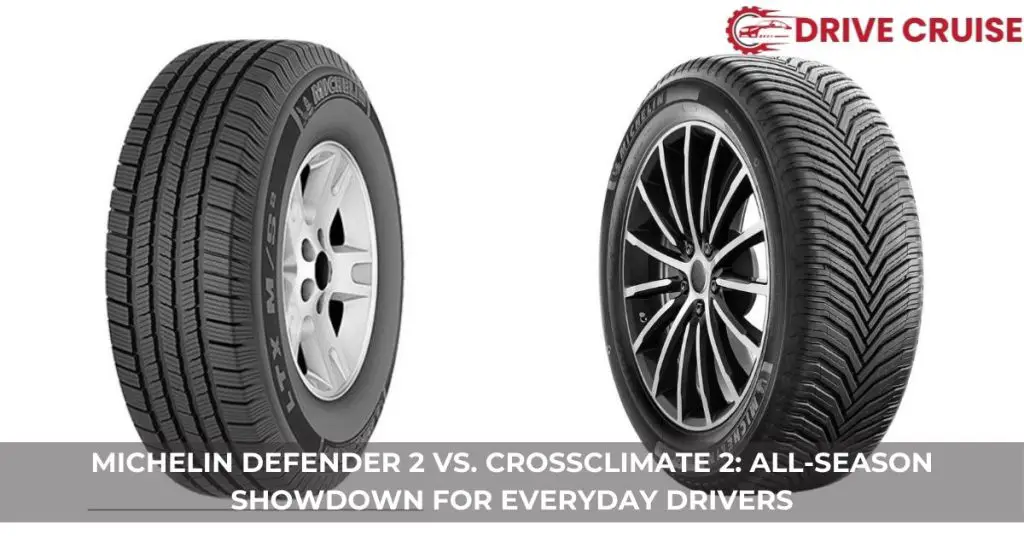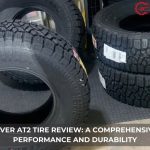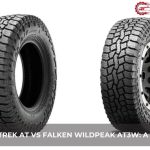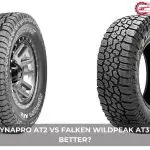When it comes to choosing the right tires for our vehicles, we’re all looking for that perfect blend of durability, performance, and safety. Enter the debate between the Michelin Defender 2 and the CrossClimate 2. Both sets promise to deliver top-notch performance, but how do they really stack up against each other?
We’ve taken it upon ourselves to dive deep into the specifics of these two tire giants. From handling harsh weather conditions to ensuring a smooth ride on long road trips, it’s crucial to know which tire will best suit our needs. Let’s explore what sets these tires apart and which might be the right choice for you. Join us as we break down the battle of the Michelin Defender 2 vs. CrossClimate 2.
Overview of Michelin Defender 2
Moving on from the general comparison, let’s dive deeper into the specifics of the Michelin Defender 2. As one of the leading tire options for those prioritizing durability and safety, the Defender 2 stands out for its remarkable tread life and enhanced grip capabilities. It’s engineered for drivers seeking peace of mind in various driving conditions, notably excelling on wet roads and in light snow.
Michelin has integrated its latest technology to ensure the Defender 2 tires offer a comfortable, noise-reduced ride without compromising on performance. This tire is renowned for its IntelliSipe technology, which maximizes the number of sipes within the tread pattern, thereby improving traction and extending the tire’s lifespan. This feature is particularly beneficial for drivers who spend considerable time on the road and are looking for a reliable tire that won’t wear down quickly.
Fuel efficiency is another strong point of the Defender 2. Thanks to the EnergySaver Construction, these tires help reduce rolling resistance, which in turn can lead to savings at the gas pump over time. For families and individuals alike, this aspect is a value-added benefit that complements the tire’s overall performance and durability.
Moreover, the Michelin Defender 2 also boasts the MaxTouch Construction, a design innovation that ensures the tire’s contact forces are evenly distributed during acceleration, braking, and cornering. This contributes to the longer wear of the tire, ensuring drivers get the most out of their investment.
The Michelin Defender 2 is tailored for those valuing safety, longevity, and fuel efficiency in their tires. Its design and features reflect Michelin’s commitment to providing top-notch products that cater to the needs of diverse drivers, making it a formidable contender in the tire selection process.
Overview of Michelin CrossClimate 2
Transitioning from the Michelin Defender 2, we now turn our attention to the CrossClimate 2, a tire that’s similarly noteworthy for its innovative approach to driving safety and performance. The CrossClimate 2 stands out for its versatility across various weather conditions, offering drivers a unique blend of features that cater not only to safety but also to efficiency and durability.
At the heart of the CrossClimate 2’s design is its exceptional all-weather capability. This tire employs the V-Formation tread pattern, an advancement that significantly boosts its grip on wet, dry, and snowy roads. The tread compounds used in the CrossClimate 2 are specially formulated to remain flexible in colder temperatures, ensuring reliable performance even in winter conditions.
Another defining characteristic of the CrossClimate 2 is its improved braking performance. Michelin claims that this tire can stop shorter on wet roads than its competitors, a feature that’s critical for safety in unpredictable weather. The tire achieves this through a combination of the innovative tread design and the use of Michelin’s Thermal Adaptive Compound, which adapts to varying weather conditions, maintaining optimal grip.
Durability is also a strong suit of the CrossClimate 2, thanks to Michelin’s EverGrip Technology. This technology involves a tread pattern that evolves as the tire wears down, maintaining its ability to evacuate water and preventing hydroplaning over its lifespan. Moreover, the CrossClimate 2 is backed by a 60,000-mile warranty, demonstrating Michelin’s confidence in the tire’s longevity.
Fuel efficiency is another area where the CrossClimate 2 shines. Its design reduces rolling resistance, which in turn lowers fuel consumption. This feature, along with its all-season capabilities, makes the CrossClimate 2 a smart choice for drivers looking for a tire that performs well year-round without sacrificing efficiency.
The Michelin CrossClimate 2 merges all-season safety with performance, durability, and fuel efficiency. It’s engineered for drivers who demand the utmost in versatility and reliability from their tires, regardless of the weather conditions.
Michelin Defender 2 vs CrossClimate 2: Performance Comparison
After exploring the unique features and design principles of each tire individually, we now delve into a direct performance comparison between the Michelin Defender 2 and CrossClimate 2. Our aim is to help drivers discern which tire might best suit their specific needs.
Starting with traction, the CrossClimate 2 edges ahead with its innovative V-Formation tread pattern, engineered for superior grip on both dry and wet surfaces. This pattern, combined with the EverGrip Technology, ensures consistent performance in various weather conditions. The Defender 2, while offering commendable traction, especially on dry roads, focuses more on longevity and fuel efficiency, making it an exceptional choice for drivers who prioritize these aspects.
When considering durability, both tires boast Michelin’s commitment to long-lasting performance. The Defender 2, however, with its emphasis on extended tread life, may offer longer service under typical driving conditions. The CrossClimate 2, with its all-weather design, maintains durability, particularly through its enhanced treadwear in challenging weather scenarios.
Fuel efficiency stands out as a strong suit for both models. The Defender 2’s optimized tread design leads to reduced rolling resistance, translating into better fuel economy. Similarly, the CrossClimate 2’s design reduces rolling resistance, aligning it closely with the Defender 2 in terms of efficiency on the road.
In terms of handling, the CrossClimate 2 takes the lead with its agility and responsiveness in various weather conditions, including light snow. Its all-weather capability does not compromise on performance, ensuring a smooth and safe driving experience year-round. The Defender 2, while offering stable and reliable handling, is optimized more for traditional dry and wet roads.
Deciding between the Michelin Defender 2 and CrossClimate 2 boils down to individual preferences and driving needs. If your driving involves navigating a range of weather conditions, including snow, the CrossClimate 2 stands out as a versatile option. For drivers focused on longevity, fuel savings, and predominantly dry or wet driving conditions, the Defender 2 represents an excellent choice.
Price Comparison
After discussing the performance aspects of the Michelin Defender 2 and CrossClimate 2, it’s crucial we navigate through their price points to inform budget-conscious decisions. Tire pricing can fluctuate based on several factors, including size, vendor, and current promotions, but generally, a trend in price difference between these models exists.
The Michelin Defender 2, known for its longevity and fuel efficiency, often carries a slightly lower price tag compared to its counterpart. For a standard passenger car tire size, prices for the Defender 2 start around $120. This makes it a cost-effective option for drivers prioritizing long-term value and fuel savings.
On the other side, the Michelin CrossClimate 2, with its advanced all-weather capabilities and emphasis on traction and handling, tends to command a higher price. For the same standard passenger car tire size, the CrossClimate 2 prices begin at approximately $150. The premium reflects its versatile performance in diverse weather conditions and the technological innovations it embodies, such as the V-Formation tread pattern and EverGrip Technology.
Budget plays a significant role in tire selection, and these price points highlight the investment required for each tire’s benefits. If your driving conditions demand adaptability to various weather scenarios, the CrossClimate 2’s higher cost might be justifiable. Conversely, if you’re focusing on maximizing tire longevity and achieving fuel efficiency in mostly consistent driving conditions, the Defender 2 offers a more budget-friendly alternative without compromising on quality.
It’s also worth noting that while initial cost is important, considering the long-term value each tire provides through durability, fuel savings, and safety features can lead to a more informed decision. Retailers often offer deals or rebates on both tires, potentially narrowing the price gap and making premium features more accessible.
Choosing between the Michelin Defender 2 and CrossClimate 2 involves weighing factors beyond performance, with price being a decisive element for many. Ultimately, matching the tire to your specific driving needs and financial constraints ensures you receive the best value for your investment.
User Feedback and Ratings
Continuing our exploration of the Michelin Defender 2 and CrossClimate 2 tires, we delve into what users are saying about their experiences. These insights often shed light on aspects that specs and tests alone might not reveal, offering a fuller picture of each tire’s real-world performance.
Michelin Defender 2: A Closer Look at Customer Impressions
Users frequently rave about the Defender 2’s impressive longevity, with many reporting significantly more miles before needing replacement compared to other tires. Comfort is another high point, with drivers enjoying a quieter ride, enhancing the driving experience, especially on long commutes. However, a few users have noted that while the tire performs admirably in most conditions, there can be slight compromises in handling during extreme weather, such as heavy snow or very slick conditions.
Michelin CrossClimate 2: Gathering User Experiences
In contrast, the CrossClimate 2 garners praise for its exceptional performance in a variety of weather conditions. Owners highlight its reliability on wet roads and its surprising capability in light snow, attributing this versatility to its innovative tread design. The trade-off, as some users point out, is a slight decrease in fuel efficiency due to its aggressive tread pattern. This hasn’t deterred many, though, with the overall feedback being overwhelmingly positive, especially from those prioritizing safety and adaptability in their tire choice.
Both the Michelin Defender 2 and CrossClimate 2 boast high user satisfaction rates on reputable consumer feedback platforms. The Defender 2 typically earns ratings around 4.5 out of 5 stars, with customers celebrating its durability and comfort. Meanwhile, the CrossClimate 2 also scores close to 4.5 stars, with accolades focusing on its all-weather capability and handling. It’s important to remember, reviews and ratings can vary by retailer and personal experience, but the consensus is clear: both tires stand out for their respective strengths, making the decision between them hinge on specific driving needs and preferences.
Ideal Use Cases for Each Tire
Moving from user feedback to application, it becomes clear that the Michelin Defender 2 and CrossClimate 2 serve specific driving needs exceptionally well. Let’s explore ideal use cases for each tire, ensuring drivers can make an informed choice based on their most common driving conditions.
Michelin Defender 2: The Go-To for Longevity and Fuel Efficiency
Drivers prioritizing fuel efficiency and longevity in their tires will find the Michelin Defender 2 to be a stellar choice. Ideal scenarios for the Defender 2 include:
- Urban and Highway Commuting: If most of your driving involves city streets or highways, the Defender 2’s fuel efficiency shines, saving you money over the tire’s lifespan.
- Mild Weather Conditions: For those living in areas with moderate climates, the Defender 2 offers dependable performance without the need for the advanced all-weather capabilities of the CrossClimate 2.
- High-Mileage Drivers: Individuals racking up thousands of miles annually will appreciate the Defender 2’s exceptional tread life, offering extended periods between tire replacements.
Michelin CrossClimate 2: The All-Weather Performer
For drivers who encounter varied and challenging weather conditions, the CrossClimate 2 emerges as the top choice. Use cases where it excels include:
- All-Season Driving: Whether facing downpours, snow, or sunny days, the CrossClimate 2 adapts to changes in weather, providing peace of mind for safety-conscious drivers.
- Mountainous or Rural Areas: The advanced tread design and rubber compounds of the CrossClimate 2 optimize grip and handling on rough, wet, or snowy roads, making it ideal for those in areas where the weather can change quickly.
- Safety Focused: Drivers prioritizing safety over fuel efficiency, especially in regions with unpredictable weather, will find the CrossClimate 2’s performance in various conditions unmatched.
By aligning your tire choice with your most common driving scenarios, you’ll not only optimize your vehicle’s performance but also ensure your driving experience meets your expectations in safety, efficiency, and comfort.
Conclusion
We’ve delved deep into the nuances between the Michelin Defender 2 and CrossClimate 2 tires, weighing their strengths and trade-offs. It’s clear that both have their place on the road, catering to different driver needs and preferences. Whether you’re leaning towards the budget-friendly, efficient Defender 2 for your daily commute or the versatile, all-weather CrossClimate 2 for more adventurous drives, you’re making a choice that suits your lifestyle. Remember, the right tire not only enhances your vehicle’s performance but also contributes to a safer journey. So consider your driving habits and conditions you face most often. That way, you’ll ensure your next tire purchase perfectly aligns with your needs. Safe travels!
Related Posts:
- 7.3 Powerstroke Years to Avoid: A Comprehensive Guide for Truck Enthusiasts
- Can You Go to Jail for Slashing Tires: Vandalism Laws and Penalties
- Michelin CrossClimate 2 vs. Michelin Defender T+H: Your Guide to Michelin All-Season Tires
- Michelin Defender 2 vs. CrossClimate 2: All-Season Showdown for Everyday Drivers
- Nissan Sentra Years to Avoid: A Comprehensive Buyer’s Guide
- Sumitomo Encounter AT vs. Falken Wildpeak AT3W: An Off-Road Showdown for Budget-Minded Adventurers“
- Sumitomo vs Michelin Tires: Which One Should You Choose?
- Toyota Charging System Malfunction: Causes and Solutions
- What Does SR Stand for Nissan: Unveiling the Trim Level Meaning
- Yokohama Geolandar AT G015 vs. Falken Wildpeak AT3W: The Ultimate All-Terrain Showdown












